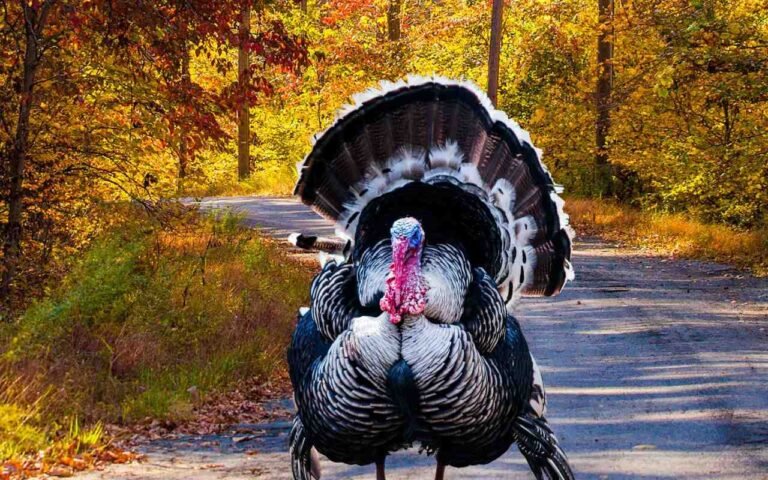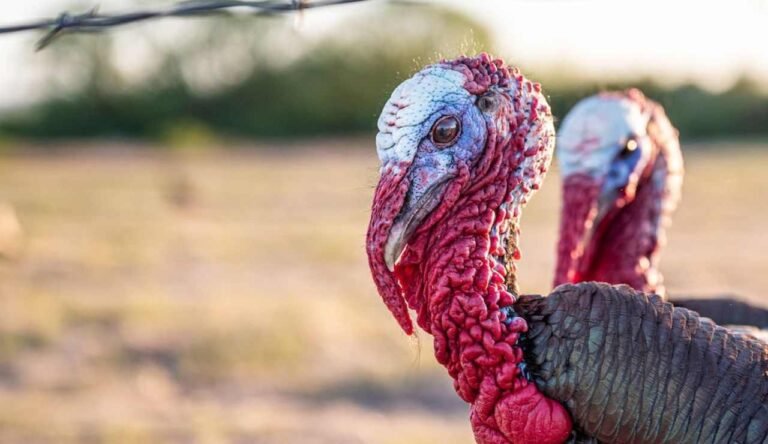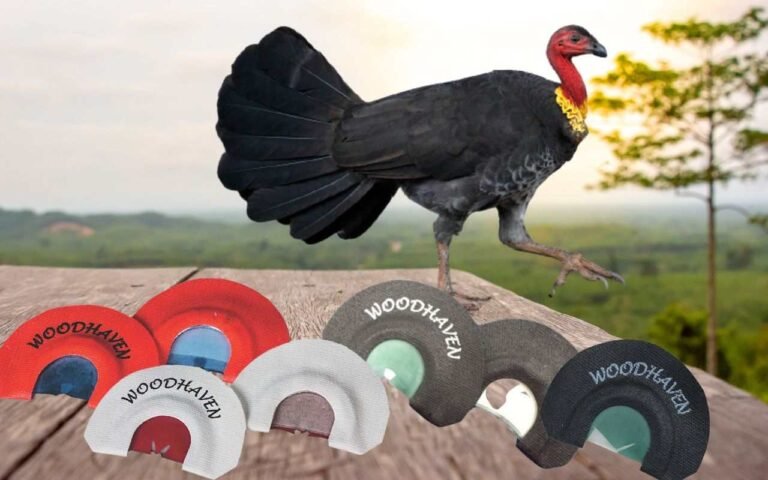Which Shotgun Choke is Best for Hunting a Large, Slow Bird, such as a Turkey?
For a clean and successful shot when hunting a big, slow bird like a turkey, choosing the appropriate shotgun choke is essential. The choke you choose will ultimately determine how well you can hunt down these elusive birds by substantially influencing the pattern density and dispersal of pellets. It might be difficult to choose the ideal choke for turkey hunting since there are so many chokes on the market, each delivering a different amount of restriction. In this post, we’ll examine the criteria to consider when choosing a shotgun choke and provide insightful advice to support your decision-making. Whether you like medium-range confrontations with a balanced spread or longer-range shots with a tighter choke, we have you covered. Let’s investigate shotgun chokes and learn how to maximize your success while hunting for turkeys.
Which shotgun choke is best for hunting a large, slow bird, such as a turkey?
The correct shotgun choke must be used to hunt huge, slow birds like turkeys to have a successful hunt. It is generally agreed upon by the sources that a complete or super-full choke is advised. With their tighter restriction, these chokes enable denser shot patterns and longer effective ranges. Although it may not be the best choice for turkeys, the enhanced cylinder choke provides an alternative for tighter ranges. When selecting a choke, it’s crucial to consider hunting circumstances, personal taste, and desired range. Finding the best shotgun choke for shooting turkeys ultimately requires testing. You will learn more about the shotgun choke in the section below.
A tight choke is often favored when hunting a big, sluggish bird like a turkey since it enables the hunter to fire at greater distances. The four most common shotgun chokes for gobbler hunting are full, modified, enhanced cylinder, and cylinder. The Carlson’s Long Beard XR Choke, Indian Creek Black Diamond Choke, and Primos Jelly Head Choke are a few of the top turkey chokes for hunting.
| Carlson's Long Beard XR Choke | Indian Creek Black Diamond Choke | Primos Jelly Head Choke | |
|---|---|---|---|
| Purpose | Designed for turkey hunting, especially with Winchester Long Beard ammunition | Designed for turkey hunting, increases pattern density | Designed for turkey hunting, enhances range and pattern density |
| Compatibility | Works best with Winchester Long Beard XR turkey loads | Accommodates lead and hybrid heavy loads, various shot sizes | Suitable for TSS loads, HEVI-Shot, Copper Plated, and Lead Shot |
| Material | Made from 17-4 stainless steel | - | - |
| Features | Produces tight patterns and extended downrange reach | Increases pattern density, tightens patterns | Tightens patterns, reduces recoil |
| Availability | Available for various shotgun models | Available for various shotgun models | Available for various shotgun models |
| Retailers | Winchester, outdoor retailers | Bass Pro Shops, Cabela's, MidwayUSA | Primos, Cabela's, Bass Pro Shops |
Shotgun Choke: General Idea and Classification
As they depart the barrel, the spread or dispersion of shot pellets is controlled by a shotgun choke, which is a tapered constriction at the muzzle end of a shotgun barrel. It is essential for changing the shot pattern, which relates to how the pellets are distributed on the target. Shooters may adjust the performance of their shotgun to meet the needs of different shooting scenarios since the choke constriction influences both pattern density and effective range.
The percentage of constriction or the exact measurement in inches are the two most common ways to describe choke constriction. While a more open choke has a lower proportion of constriction or a bigger measurement, a tighter choke has a higher percentage of constriction. Shot patterns and effective range vary with different choke constrictions.
Overview of common shotgun chokes
| Choke Constriction | Pattern Density | Effective Range |
|---|---|---|
| Cylinder | Low | Short |
| Improved Cylinder | Moderate | Short to Medium |
| Modified | Moderate to High | Medium to Long |
| Improved Modified | High | Long |
| Full | Very High | Long |
The choke compacts the shot column over a longer distance, creating a denser pattern. This denser pattern is good for longer shots and tighter pellet clusters. However, a more open choke disperses the shot faster, giving a broader pattern appropriate for shorter ranges or circumstances requiring greater coverage.
Shot pellet concentration is pattern density. Tighter chokes increase pattern density by concentrating pellets. This may benefit precise targets like tiny games or long-range shots. A more open choke spreads pellets across a broader region, lowering pattern density. This may benefit close-range shooting or targets with a higher margin of error.
Pattern density and accuracy affect range. A tighter choke keeps the shot column denser for longer, whereas a more open choke spreads pellets, reducing the effective range.
Common Types of Shotgun Chokes
Cylinder Choke
| Characteristics | Suitable For | Not Suitable For |
|---|---|---|
| Lack of constriction, unconstricted barrel | Upland game hunting at close ranges | Turkey hunting, long-range shooting |
| Wide shot pattern, less pellet density | Quail, rabbits, small game | Hunting scenarios requiring tight shot patterns |
| Rapid shot string dispersion, reduced effective range | Dense cover, fast and agile game | Extended distances |
Improved Cylinder (IC) Choke
| Improved Cylinder (IC) Choke |
|---|
| Characteristics |
| - Possesses slight constriction or taper at muzzle end of the barrel |
| - Provides a balance between the tighter constriction of modified or full chokes and the openness of cylinder chokes. |
| - Allows shot string to spread fairly quickly after leaving the muzzle |
| - Provides moderately tight shot pattern compared to wider chokes |
| Effective Range |
| - Lead shot: 10 to 25 yards |
| - Steel shot: 15 to 30 yards |
| - Extended effective range in contrast to more open chokes |
| - A potential turkey hunting alternative that offers a tighter pattern at farther distances |
| Versatility |
| - Frequently used for bird hunting, sporting clays, and upland hunting. |
| - Improves pellet concentration and precision while maintaining spreading ability |
Modified Choke
| Characteristic | Modified Choke |
|---|---|
| Tightness of Pattern | Tighter pattern compared to more open chokes |
| Suitable Range | Medium range: 26 to 42 yards for lead shot |
| Versatility | Considered a versatile option for various hunting scenarios |
| Accuracy Improvement | Concentrates pellets, resulting in denser shot pattern |
| Pellet Density | Increased pellet density on the target |
| Hunting Application | Popular choice for turkey hunting |
| Focus and Effectiveness | Allows for a more focused and effective shot pattern |
| Extended Effective Range | Offers improved range compared to more open chokes |
| Versatility in Hunting | Provides flexibility in targeting game at medium distances |
Full Choke
| Characteristic | Full Choke |
|---|---|
| Pattern | Tight pattern that endures over greater distances and delivers a significant number of pellets to the target |
| Aiming | Owing to the pattern's tightness, requires exact aim |
| Maximum Effective Range | Appropriate for shots from 40 yards and beyond |
| Common Usage | Long-range shooting and large game hunting |
| Testing | Shot at a 30" circle at a distance of 40 yards, with an expectation that 70% of pellets would land within the circle. |
Extra Full/ Turkey Choke
| Characteristic | Extra Full/Turkey Choke |
|---|---|
| Type | Shotgun choke |
| Main Purpose | Hunting large, slow birds (e.g., turkeys) |
| Pattern Tightness | Extremely tight |
| Pattern Density | Dense pattern of pellets |
| Effective Range | Extended range capability |
| Shot Placement | Focuses on hitting vital areas of the target |
| Constriction | High level of constriction at the muzzle end |
| Target Area | Typically a 10-inch circle at 40 yards or more |
| Shot Charge Cohesiveness | Retains energy and cohesiveness over longer distances |
| Factors to Consider | Firearm, ammunition, shooting scenario |
| Testing/Patterning | Pattern the choke with the required load |
Factors to Consider When Choosing a Shotgun Choke for Turkey Hunting
There are several things to consider when selecting a shotgun choke for turkey hunting to make sure you make the appropriate decision. The search results provide insightful information on this subject.
1. Ammo and Shotgun Compatibility: It’s important to think about the ammunition you want to use and ensure the choke tube is appropriate. Certain chokes, such as lead, bismuth, or TSS chokes, perform better with certain kinds of shotshells.
2. Range: The range you want to fire is an important consideration. The effective ranges of various chokes vary. Choose a choke that works effectively within the ranges you’ll be hunting at after determining those ranges.
3. Pattern Density and Pellet Count: How the choke affects the pattern density and pellet count. The objective is to produce a dense pattern with many pellets striking the intended region. Consider using choke tubes that produce excellent patterns and boost pellet concentration.
4. Choke Tightness: How tight the choke is influenced the shot’s spread. Extra full and other turkey chokes provide tighter constrictions than full chokes and other chokes. These more constricted chokes aid in maintaining a focused shot pattern at greater ranges.
5. Shot Position: Make sure your choke enables precise shot positioning. You should be able to hit the turkey’s important spots with the tight pattern if you aim for a 10-inch circle on the target.
6. Personal Preference and Testing: Consider your hunting tastes and style. Depending on their tastes and requirements, various choke tubes may work better for various hunters. Investigating and trying several choke tubes is advised to determine which works best with your shotgun and ammo.
To evaluate the choke’s performance with your particular configuration, always pattern it with the required load. You may choose a shotgun choke that improves your shotgun accuracy and effectiveness while hunting turkeys by considering these elements and carrying out the necessary tests.
Choke Constriction VS Shot Pattern Visualization
| Choke Constriction | Shot Pattern Visualization |
|---|---|
| Tighter Choke (e.g., Full Choke) | More concentrated shot pattern. Long-range shots. |
| Looser Choke (e.g., Improved Cylinder, Modified) | Broader angle. For closer shots or broader spreads. |
| Pattern Testing | Pattern-testing your shotgun with multiple chokes and loads is crucial. Shoot at a 40-yard target to analyze pellet dispersal and find the choke that gives the appropriate pattern density. |
| Personal Preference | Choke choice depends on hunting style and desire. Find the choke and load that matches your shooting technique and hunting situations by experimenting. |
| Ammunition Compatibility | Check ammo and choke compatibility. Lead, bismuth, and tungsten shot sizes may work better with certain choke tubes. |
| Variability Between Shotguns | Even with the same choke, shotgun patterns may differ depending to barrel length, bore diameter, and gun characteristics. Try various choke and load combinations with your shotgun to find the best turkey hunting pattern. |
Conclusion
The optimum shotgun choke for hunting huge, slow birds like turkeys depends on the hunting conditions and personal choice. Full chokes help concentrate and extend reach for longer shots. For medium-range shots, hunters choose looser chokes like Modified or Improved Cylinder. To find the best choke and load for your rifle and desired pattern density, pattern test. Consider shooting style, hunting circumstances, and rifle attributes. Finding the best turkey choke takes testing, compliance with local hunting restrictions, and proper ammunition.
Frequently Asked Questions
What are the four most common shotgun chokes from most open to tightest?
From most open to tightest, the most popular shotgun chokes are the Cylinder, Improved Cylinder, Modified, and Full chokes. The Cylinder choke offers the broadest shot pattern and no restriction for close-range shooting. Close-quarters hunting and shorter ranges employ the Improved Cylinder choke. With a tighter, denser shot pattern, the Modified choke is suitable for varied distances. For long-range shooting, the Full choke is the tightest. Shooting range, target size, and hunting circumstances affect choke choice.
Which two shotgun chokes are best for hunting small, fast, close birds?
Improved Cylinders and Modified chokes are suggested for hunting tiny, rapid, and close birds. The Improved Cylinder choke produces a wide shot pattern that spreads fast for close-range targets. The Modified choke increases pellet density and accuracy at middle distances of 30-40 yards. These birds are commonly hunted with shotguns with Improved Cylinders or Modified barrels because these chokes provide the appropriate shot pattern for successful targeting at shorter ranges. Before picking a choke, experts, credible sources, personal preferences, bird species, and hunting circumstances should be considered.
How does a turkey choke differ from a full choke in terms of constriction and spread?
Turkey and complete chokes vary in constriction and distribution. Choke constriction affects shot patterns by narrowing the shotgun barrel muzzle. According to the search results, full chokes are.030 inches tighter than cylinder bores. Turkey chokes are tighter than full chokes by around 30 thousandths of an inch. For turkey shooting at longer distances, a turkey choke’s greater constriction concentrates the shot pattern and pellet density. Turkey chokes improve accuracy and pellet placement inside a 30-inch circle, particularly when shooting turkeys at 40–55 yards. In conclusion, a turkey choke is tighter than a full choke, providing a more targeted shot pattern and higher pellet density for certain hunting situations.
- Florida Turkey Season 2025-2026: Latest Hunting Dates, Licenses & Rules Available! - October 16, 2025
- Delaware Turkey Season 2025-2026: [Everything You Need to Know Dates, Regulations, Bags & More] - October 16, 2025
- Connecticut Turkey Season 2025-2026: [Dates, Regulations, Bag Limits & More] - October 16, 2025






